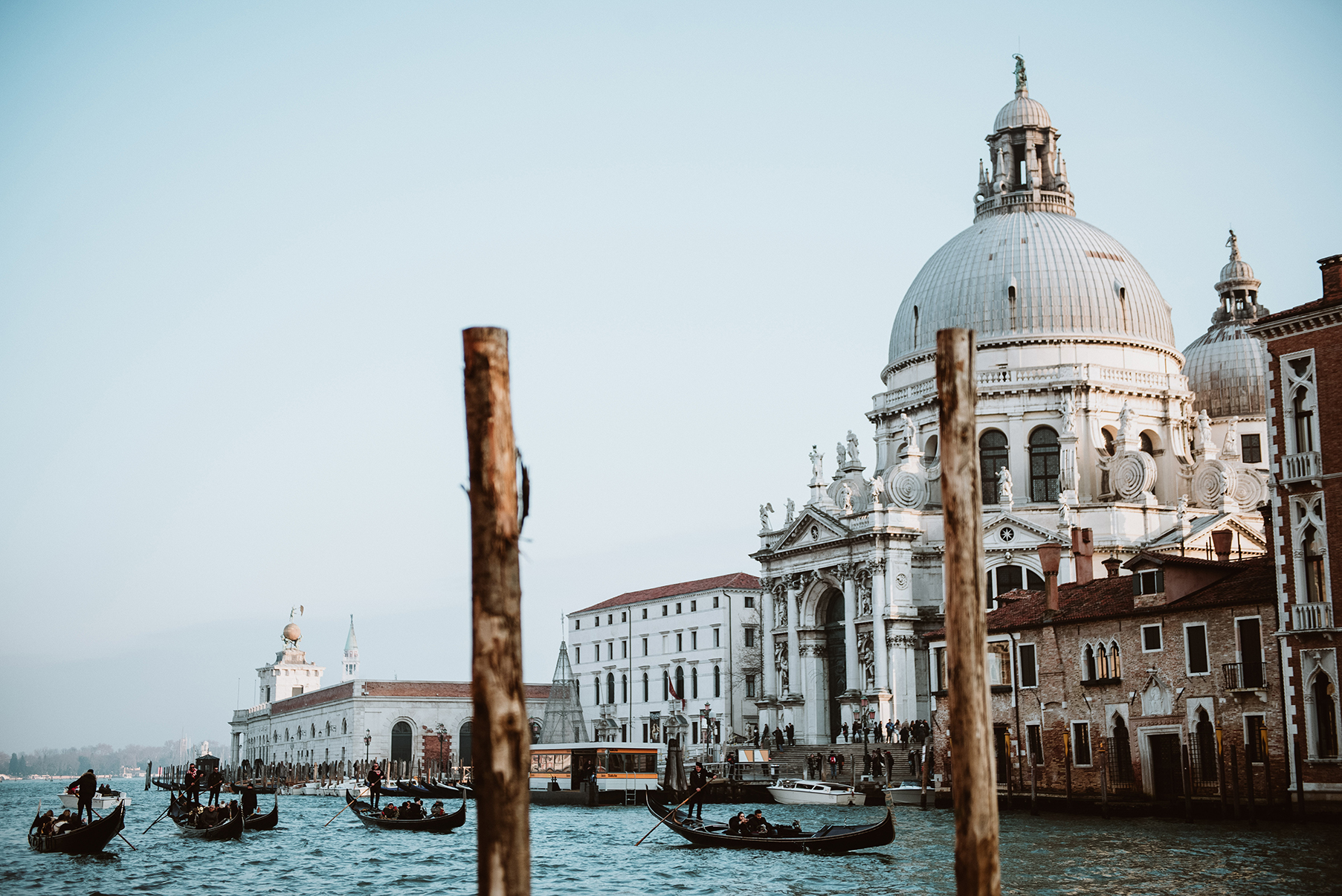Venice’s common epithet, La Serenissima, or “the most serene” in English, captures some of the magical allure that this otherworldly watery city has long held. There is simply nowhere else like it, a city that seems almost fantastic, floating above the lagoon with its bridges, churches, and palazzos glimmering in reflected sunlight. The nickname reflects not only the beauty of the city and its buildings with their unique hybrid Gothic-Byzantine style, but the fact that Venice has long felt removed—serenely—from the currents of history. Since the end of the eighteenth century and the collapse of the Venetian Republic, its insular nature has become even more pronounced. Embarking from the mainland, the feeling of leaving the real world and all its cares behind is undeniable.
Eat
Sadly, Venice’s popularity with thousands of tourists from around the globe has arguably hampered its dining scene. Unlike Rome or Milan, or even another popular tourist destination like Florence, many of those visitors are content with the most basic of pastas and pizzas, often sold at elevated prices. There are, however, dining gems to be found. While a coffee or a cocktail at Caffè Florian, on Piazza San Marco, is must for the café’s opulent décor and historic significance (it opened in 1720 and claims to be the oldest continuously operating café in the world), your culinary options improve as you venture beyond the busiest tourist areas.
Campo Santa Margherita is lined with bars and restaurants that are local favorites. Osteria alla Bifora stands out—a family-run operation that serves generous boards of cheese and cured meats, as well as a limited menu of more substantial dishes. Its reasonable prices as well as late hours (it’s open until 2 a.m.) help add to its popularity. Nearby La Bitta is known for eschewing fish dishes in a city where seafood is the focus at many small restaurants. Instead standout dishes include lamb chops and liver with onions, a specialty of Venice. The small spot is cozy whether you dine in the main room or the small garden open during warmer months.

A coffee or cocktail at Caffè Florian is a must when visiting Venice. Credit: Caffè Florian 
Osteria alla Bifora is a hit with tourists and locals, serving up some of the best local cheese, meat and wine. Credit: Osteria alla Bifora
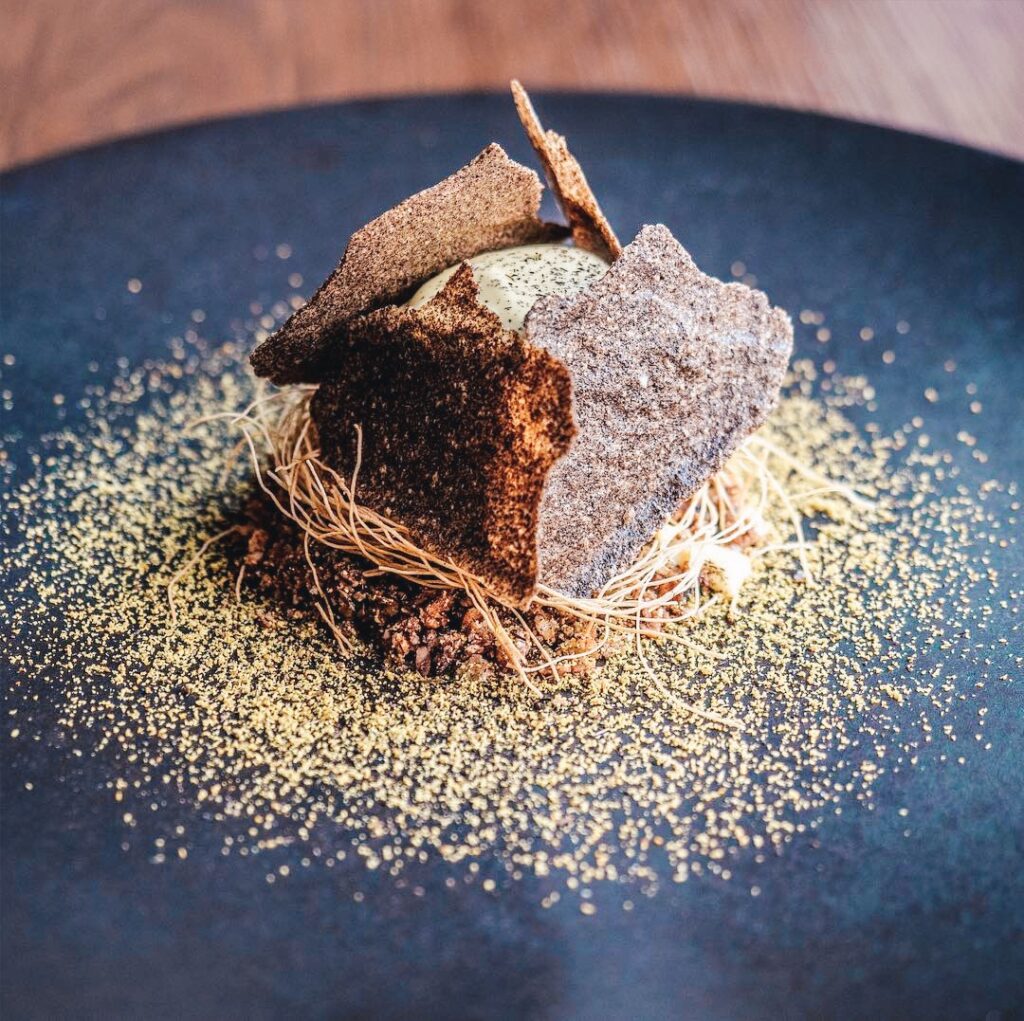
Ristorante Local offers a unique experience, with dishes like hay ice cream wrapped in filo pastry and almond granola. Credit: Ristorante Local 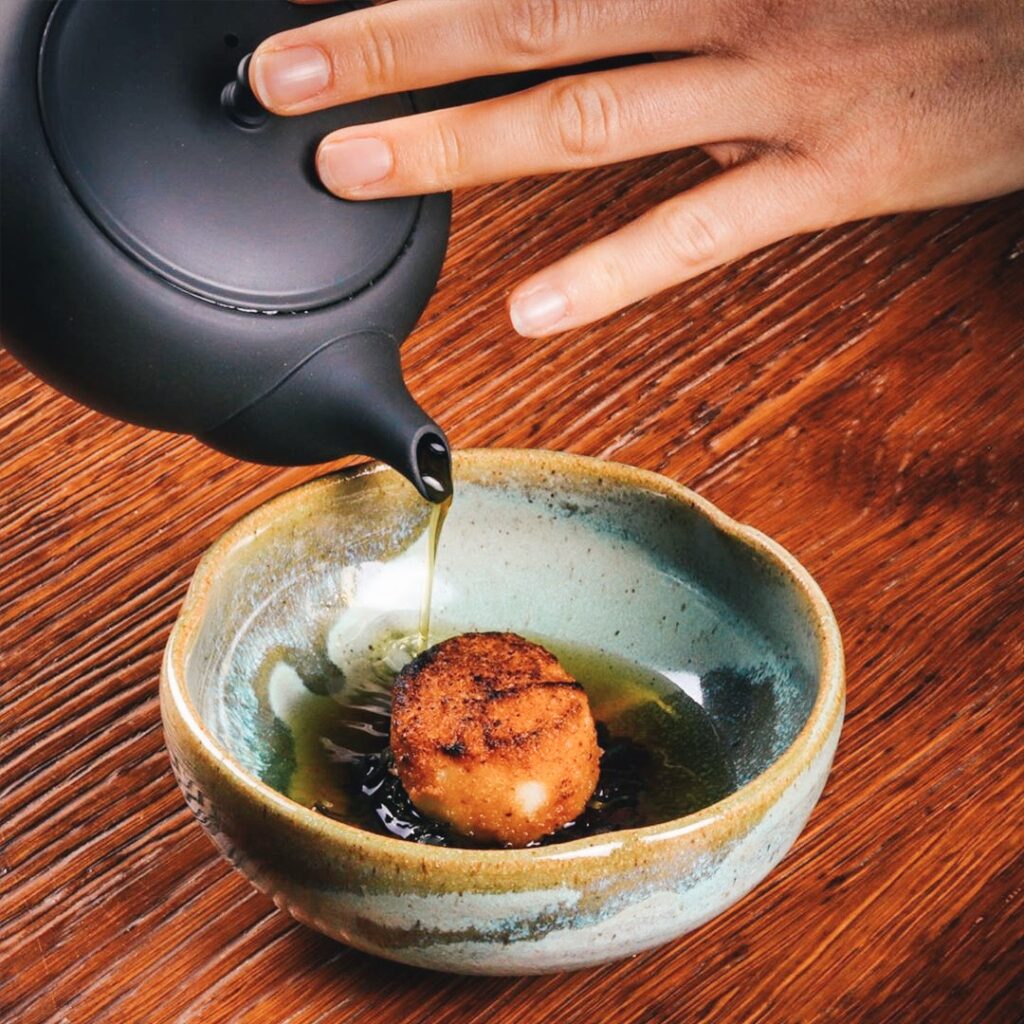
Ristorante Local tailors their dishes to perfection, like this smoked bone marrow topped with seaweed and cabbage broth. Credit: Ristorante Local
Ristorante Local has done much to elevate the city’s dining scene with its emphasis on local and seasonal cuisine. While this philosophy has long been embraced in much of the world, it has been slower to arrive in Venice where even many leading restaurants sell fish that has been shipped in and, given the city’s geography, there are few local farmers who can supply restaurants. Chef Matteo Tagliapietra has embraced the challenge, seeking out purveyors on the various smaller islands of the lagoon while also preserving and updating many traditional Venetian recipes.
Play

the perfect place to discover the city’s history. Credit: Shutterstock
It is almost hard to avoid Venice’s major sites even if you want to—you’ll find yourself at Piazza San Marco and crossing the Rialto Bridge simply by following the flow of visitors. It requires some effort, however, to visit its less famous museums, neighborhoods and outer islands. It is worth it, however, for the different perspective on Venicethese excursions provide and they may prove to be the highlights of your stay. So, here are some more under-the-radar things to do.
The Jewish quarter, home of the original ghetto whose name would later be applied to countless other neighborhoods around the world, sits to the north of the busy heart of the city. The formal demarcation of the ghetto as an area where Jewish residents were confined ended in 1797, after Napoleon conquered Venice. Venice’s Jewish population today numbers between 400 and 500 but the ghetto still remains a distinctly different area. Its heart is the Campo di Ghetto Nuovo and its five synagogues are highlights of the area. The Jewish Museum of Venice has exhibitions on the community’s culture and history and arranges visit to the synagogues.
You can see the island of Maggiore from Piazza San Marco, and a quick water taxi ride offers closer looks at its iconic Palladian church. Once there, you can also see the temporary exhibitions at one of Venice’s more interesting (and free) contemporary art spaces, the Faurschou Foundation. The Fondazione Cini, also on Maggiore, hosts both classical music concerts and temporary art exhibitions.
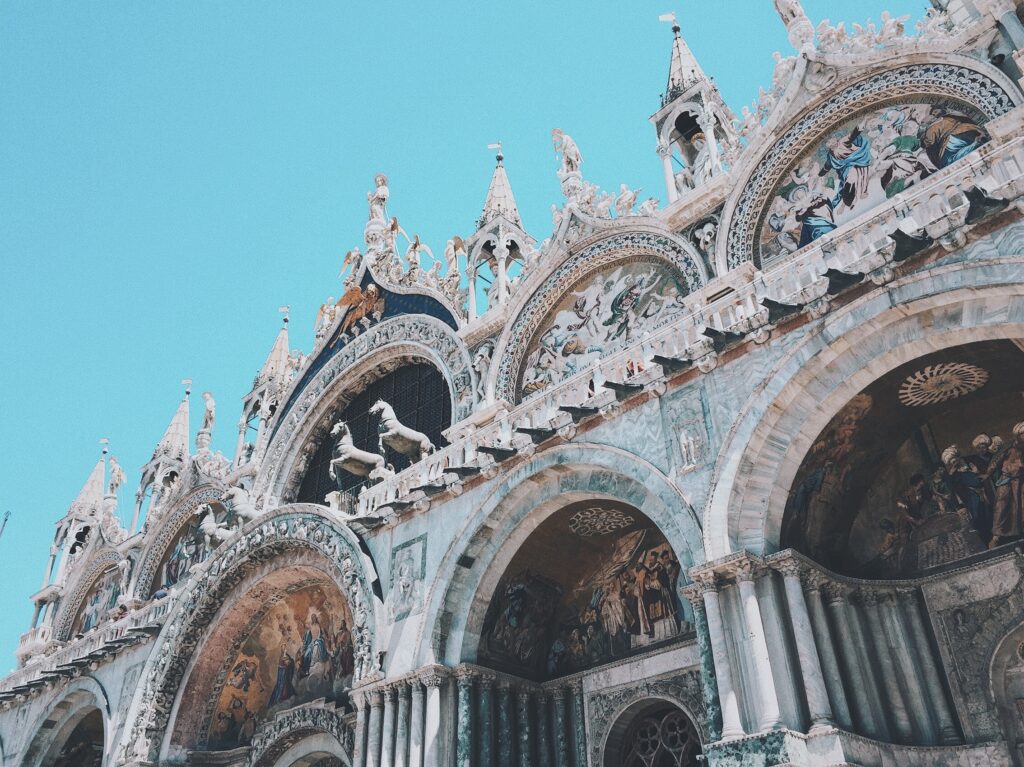
San Marco is the tourist hub of Venice, where you’ll find landmarks like St. Mark’s Basilica. Credit: Tiara Aracama/Unsplash 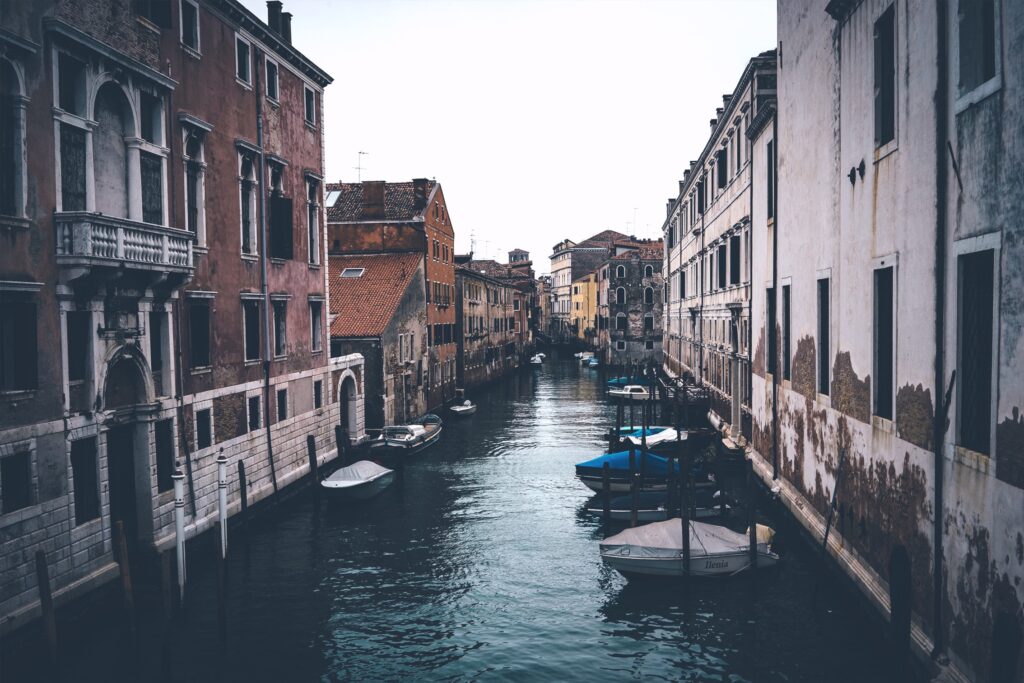
The Jewish Quarter was originally called the ghetto, a term that spread throughout the world. Credit: Shutterstock
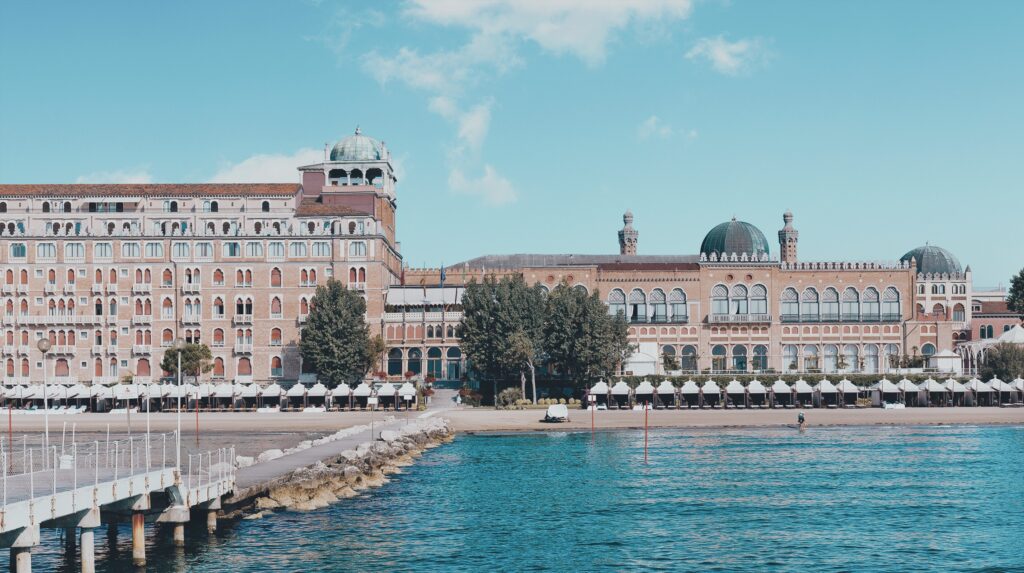
Take a water taxi to the nearby island of Lido and see a different side to the city. Credit: Shutterstock 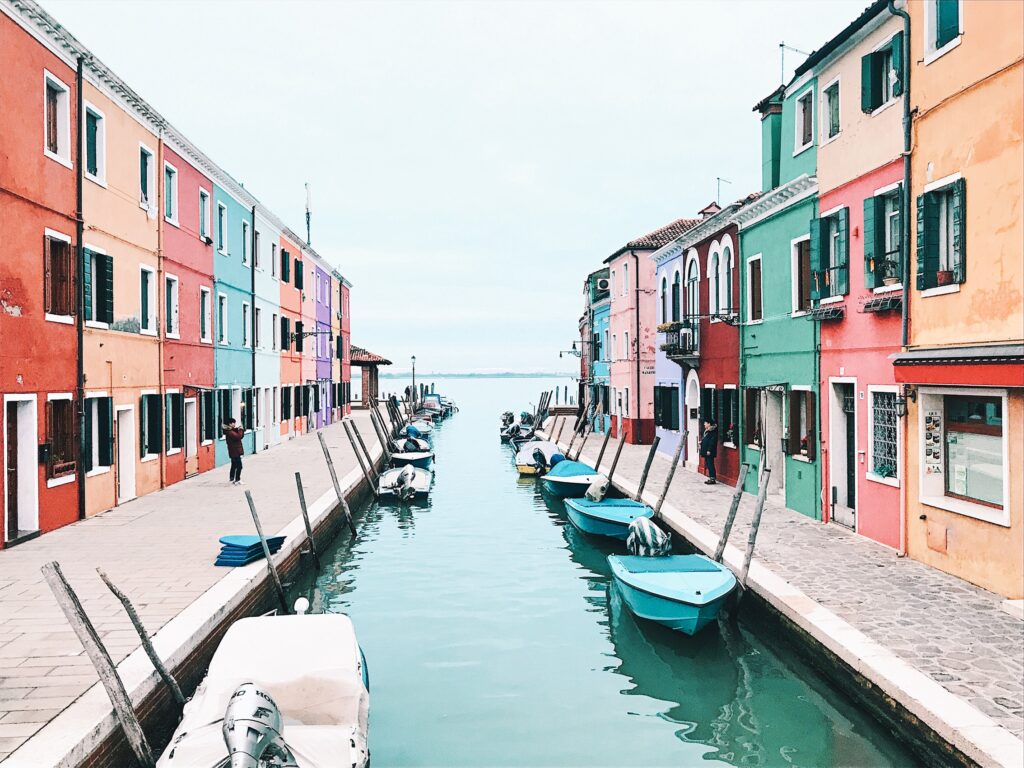
Visit the islands of Murano and Burano and see rows of candy-colored houses. Credit: Tania Miron/Unsplash
The islands of Murano and Burano, each with its own canals and piazzas, can feel like little Venices but at a more leisurely pace. The residents of both islands tend to go about their daily lives without paying much heed to visitors. Murano (roughly 10 minutes by water taxi from Piazza San Marco) is famous for its glass, and you’ll have plenty of opportunities to pick up handmade souvenirs at its studios. Burano (an additional 30 minutes from Murano) is best known for its bright, candy-colored houses and is also a lace-making mecca.
A very different side of Venice can be experienced on a day trip to the Lido, roughly 20 minutes by water taxi from Piazza San Marco. The seven-mile-long barrier island that separates the Venice lagoon from the Adriatic is the city’s beach resort, and also famous as the setting of Thomas Mann’s Death in Venice. A day trip offers a welcome antidote to any feelings of cultural fatigue after admiring too many artistic and architectural masterpieces.
Stay
Hotel American-Dinesen
Venice can boast that it’s home to some of the world’s legendary and luxury hotels, both classics like the Hotel Danieli and new arrivals like the Aman Venice but more moderately priced options offering good value for their rates are harder to find. The Hotel American-Dinesen is one that stands out. Located in the Dorsoduro area, to the west of the Grand Canal, it’s not far from the Peggy Guggenheim Collection. The 30-room hotel sits on one of the larger canals that cuts through the neighborhood and it is easy to spot with its window boxes filled with geraniums. The décor is traditional, though recent renovations have given the bathrooms an update that brought them into the 21st century. There is no restaurant on the property, though breakfast is served every morning.
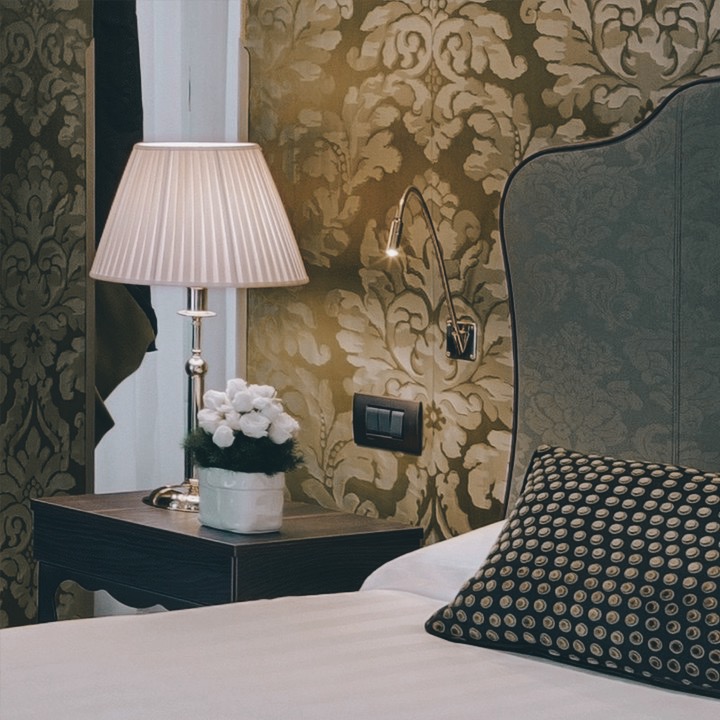
Hotel American-Dinesen offers 30 elegant rooms with chic decor. Credit: Hotel American-Dinesen 
American-Dinesen sits in the trendy Dorsoduro district. Credit: Hotel American-Dinesen
Hilton Molino Stucky
As with Venice’s restaurants, you’ll often find better values the farther you are from Piazza San Marco. One case in point is the Hilton Molino Stucky on Giudecca, the island that sits to the south of the Giudecca Channel, across from Venice’s major islands. It’s an area that’s ideal for exploring when you want to see a quieter side of Venice, without souvenir stores or groups of tourists. The Hilton is located in a former mill (molino in Italian) and rooms are both more contemporary and more spacious than is true at many hotels on the city’s central islands. While you may feel somewhat removed from the heart of activity—a plus for many—the hotel makes it easy to get to and from the center of Venice with a shuttle service that departs regularly throughout the day, dropping guests off at the Piazza San Marco and Zattere, on the opposite side of the Giudecca Channel.
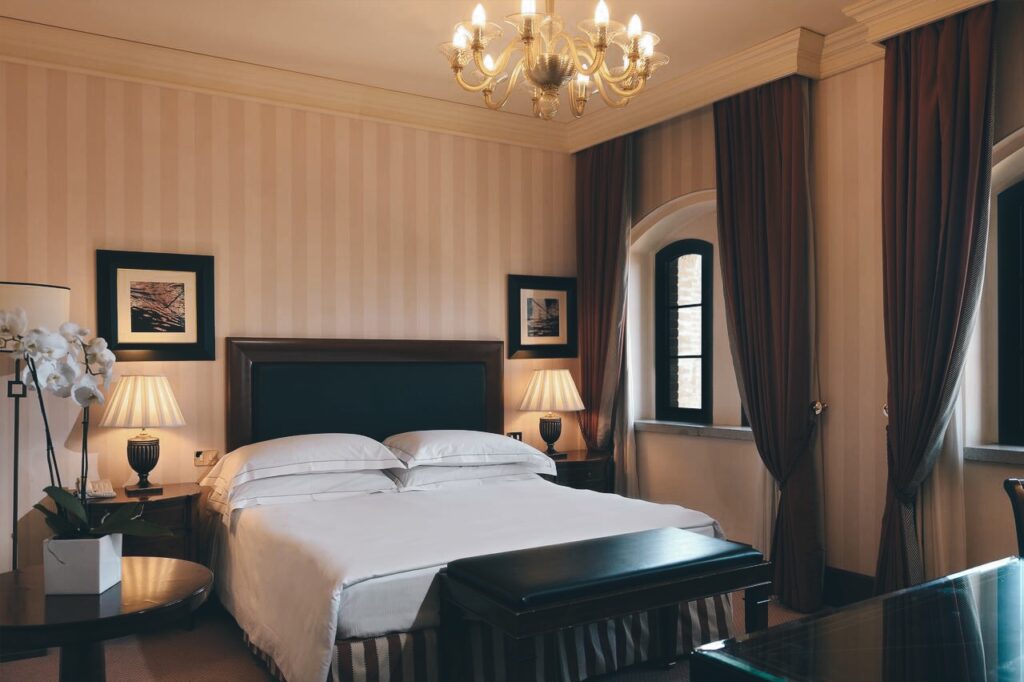
Dodge the crowds and enjoy a more laidback stay at Hilton Molino Stucky. Credit: Hilton Molino Stucky 
The Hilton Molino Stucky boasts spacious and luxurious rooms. Credit: Booking.com
